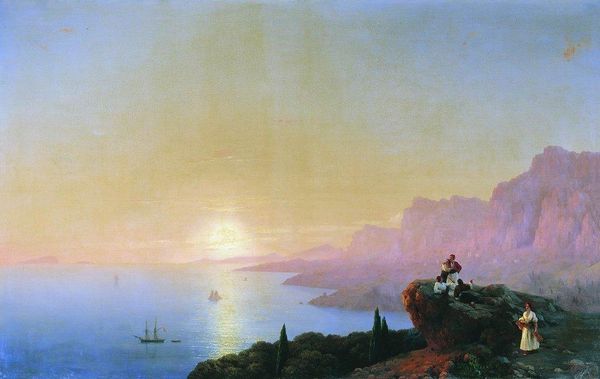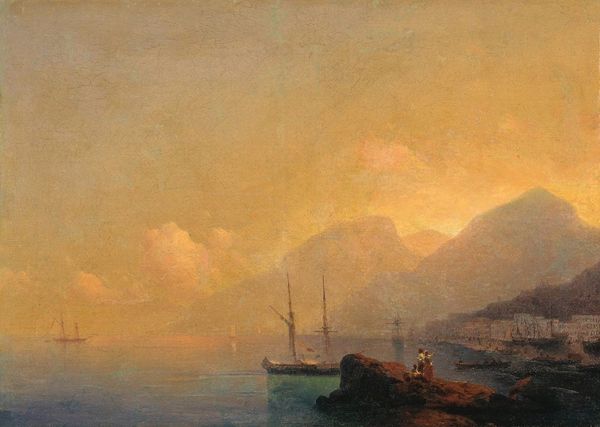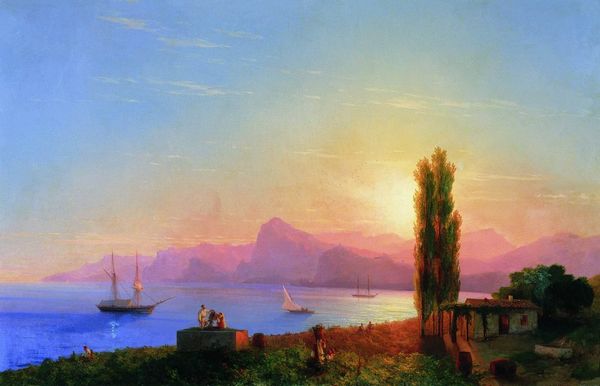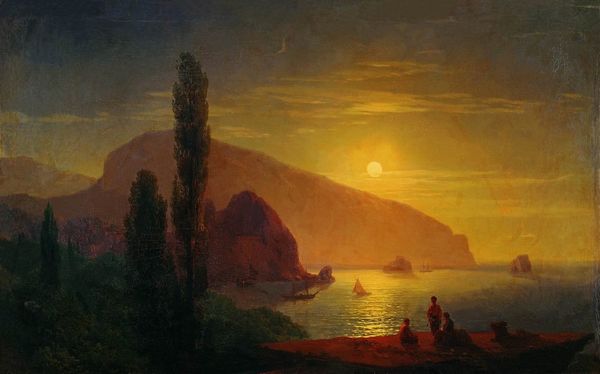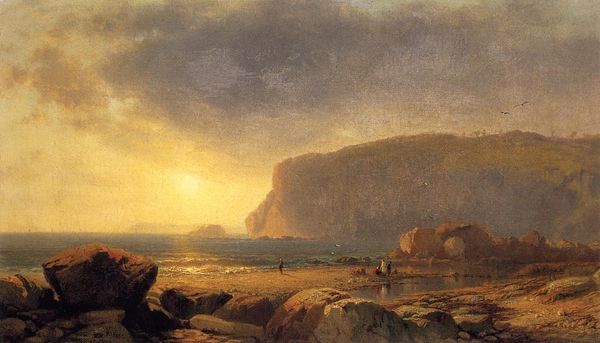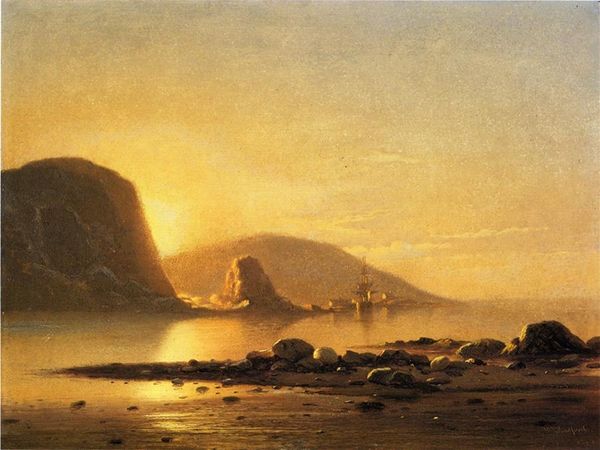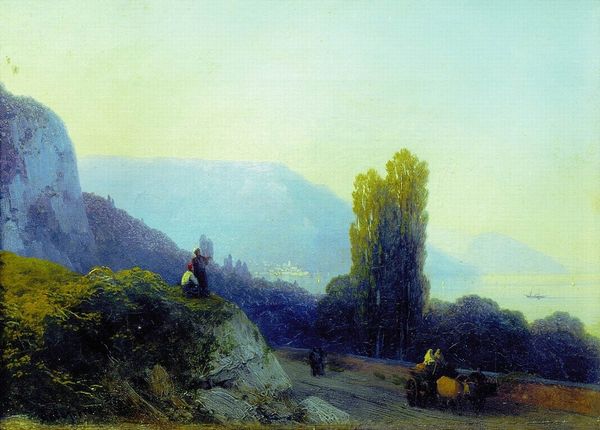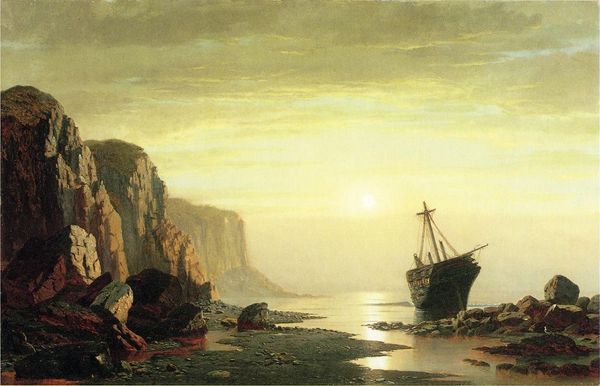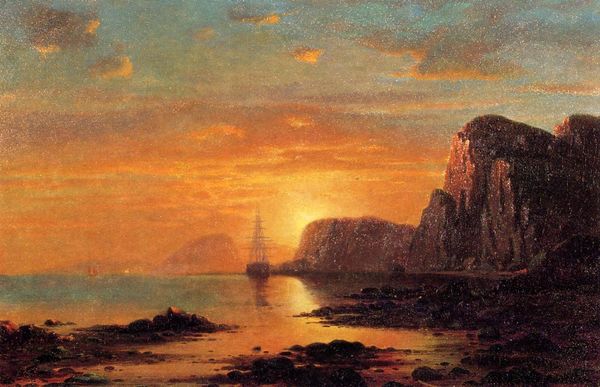
painting, oil-paint
#
sky
#
painting
#
oil-paint
#
landscape
#
figuration
#
romanticism
#
mountain
#
seascape
#
orientalism
#
chiaroscuro
#
fog
#
painting painterly
#
cityscape
#
history-painting
#
nature
#
realism
Dimensions: 126 x 196 cm
Copyright: Public domain
Editor: This is "Evening in the Crimea" by Ivan Aivazovsky, painted in 1848. It's an oil painting depicting a coastal scene at dusk. I’m immediately struck by the light – it feels so dramatic, yet peaceful. How do you interpret this work? Curator: Aivazovsky masterfully uses light and shadow to evoke not just a specific place, but a feeling, a cultural memory. Crimea itself holds a potent symbolic weight, doesn't it? Crossroads of empires, cultures colliding, romanticized in Russian art as a space of both idyllic beauty and geopolitical tension. What about those figures on horseback – what story do they seem to carry for you? Editor: They seem like onlookers, or perhaps travelers returning home. The way they're positioned almost like they're pausing to take in the view... Maybe there's a sense of ownership implied? Curator: Precisely! Consider the lens of Orientalism – a European fascination with the "exotic" East. Aivazovsky, though Armenian, paints Crimea through this romantic filter, celebrating its beauty while subtly reinforcing a sense of Russian dominion. The very act of depicting this land as serene and picturesque carries a powerful ideological charge. Notice how the architecture almost blends in. Editor: I see what you mean. The buildings in the background feel dwarfed by the landscape, emphasizing the "untamed" nature. It does make you think about how landscape painting can also be a form of cultural statement. Curator: Indeed. It reminds us how even seemingly objective depictions of nature can be imbued with cultural and political meaning, encoding complex historical narratives through visual symbols. Aivazovsky captured more than a sunset; he painted a world of interconnected meanings. Editor: I'll definitely look at landscapes differently now. Thanks for pointing out those layers of symbolism!
Comments
No comments
Be the first to comment and join the conversation on the ultimate creative platform.
